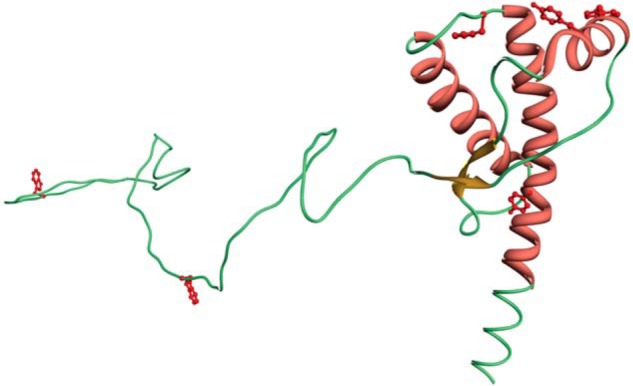The prion protein (PrP) were involved in prion diseases such as Creutzfeldt-Jakob disease, in which the isoform mobile monomer his (PrP (C)) were recruited into the polymer self-propagating pathogenic misfolded proteins, and in Alzheimer’s disease, in where PrP (C) can act as a receptor to form synaptotoxic oligomeric amyloid-β (Aβ). There is considerable interest in the identification of compounds that bind to PrP (C), to stabilize the original fold and thus act as a pharmacological chaperone to block propagation of prions and pathogenesis.
However, compounds that bind to PrP (C) can also inhibit the binding of toxic Aβ species and may have a role in treating Alzheimer’s disease, dementia is very common that there are currently no disease-modifying treatments.
However, the absence of unity, easily measured, the physiological function of PrP making ligand screening for challenging and highly heterogeneous nature of Aβ oligomers preparations make conventional competition binding tests are difficult to interpret. Therefore we have developed a high-throughput screen utilizing site-specific protein fluorescently labeled to identify compounds that bind to PrP and Aβ bind and inhibit the propagation of prions.
After the 1,200 drugs approved screen, we identified the Chicago Sky Blue 6B as the first small molecule capable of inhibiting Aβ PrP ligand binding, demonstrating the feasibility of the development of drugs to block this interaction.
Chicago Sky Blue 6B interaction characterized by isothermal titration calorimeter, and its ability to inhibit the binding Aβ and reduce levels of prion established in cell based assays.

Identification and characterization of human Rad51 inhibitors by screening of an existing drug library.
Homologous recombination (HR) plays an important role in cell proliferation and maintaining genomic stability by repairing DNA double-strand breaks that occur during replication. RAD51, a key protein of HR in eukaryotes, can have increased expression levels in tumor cells, which correlates with resistance to anticancer therapy.
Therefore, inhibition of RAD51 targeted by inhibitors can improve tumor response to therapy. In order to identify small molecules that inhibit the activity of RAD51, we screened Prestwick library (1120 molecules) for their effect on the strand exchange reaction catalyzed by RAD51.
We found that the Chicago Sky Blue (CSB) is a potent inhibitor of the RAD51, showed IC₅₀ values in the low nanomolar range (400 nM). Biochemical analysis showed that the mechanism of inhibition may occur by interfering with RAD51 association with a single strand of DNA, which prevents the formation of nucleoprotein filaments, the first step of protein activity.
Structure Activity Relationship analysis with a number of compounds that share structural homology with CSB also performed. The sensitivity of CSB modification RAD51 inhibition showed specific interactions between molecules and RAD51 nucleofilament. CSB and several analogues opens new perspectives in the search for an agent capable of potentiating chemotherapy and radiotherapy treatment for cancer.
In addition, these compounds can be an excellent tool for analyzing cellular functions RAD51. Our study also highlights how the CSB and analog, which is often used in dyes, stains and markers, could be responsible of unwanted side effects by perturbing the DNA repair process.